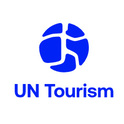International Tourism Obtains Its Best Results In 20 Years | WTO Reports
Bangkok, Thailand, After three years of stagnant growth, international tourism experienced a spectacular rebound in 2004. According to WTO World Tourism Barometer, presented to the media at a news conference in Bangkok, Thailand, international tourist arrivals reached an all-time record of 760 million - an increase of 10% over 2003.
The main purpose of the press conference was to present the Phuket Action Plan, adopted on 1 February by WTO's Executive Council at its special session in Kata Beach, Phuket. The Plan is aimed at accelerating tourism recovery in the Indian Ocean to ensure that the tourism sector in the afflicted countries emerges from the tsunami disaster stronger and more resilient than ever before. Last year's record results for Asia and the Pacific should go a long way to contributing to a rapid recovery.
Growth was common to all regions, but was predominantly strong in Asia and the Pacific (+29%) and in the Middle East (+20%). Double-digit growth was also registered in the Americas (+10%), while Africa (+7%) and Europe (+4%) performed below the world average, but still substantially improved their results of previous years. 2004 was marked by the strong rebound of Asia and the Pacific after the setbacks suffered in 2003 under the blow of SARS, by the return of the Americas to positive results and by the redistribution of overall tourism flows in Europe and in the Americas under the effects of the USD/euro exchange rate. The recovery of the world economy, and in particular of the economies of important American and European generating markets, strongly contributed to the very good results obtained in 2004. The fears of the impact of the oil prices were overall offset as the year went by and such increases were being absorbed by the dynamism of the world economy and seem to have not affected the consumers' travel confidence.
"As we foresaw in October, tourism in 2004 reached a record of 760 million international tourist arrivals and the best growth rate of the last 20 years," WTO Secretary-General Francesco Frangialli said. "We are confident that the tourism sector is back on the right track after three difficult years and though still in commotion over the tragic events in Asia, the tourism sector will surely show again its extraordinary resilience and its ability to overcome difficulties by making an important contribution to the quick recovery of the affected countries".
In a context of double-digit world tourism revival, Europe reports the lowest result of all regions. International tourist arrivals grew by 4% to a total of 414 million, driven in particular by the excellent performance of countries in Central and Eastern Europe (+8%) and in Northern Europe (+7%). In contrast, results were significantly more modest in Southern/Mediterranean Europe (+3%) and in Western Europe (+2%). The more mature destinations in the euro zone were particularly affected by the increased competition from non-euro destinations, not only in Europe, but also in North Africa (Morocco and Tunisia) and in the Middle East (Egypt).
2004 was definitely the year of full recovery in Asia and the Pacific as the region attained a 29% growth rate, receiving an estimated volume of 154 million tourist arrivals. Following the trend already seen during the last months of 2003, most of the destinations in North-East and South-East Asia rebounded very strongly from the SARS effects, leading both subregions to end the year with a projected increase of around 30%.
After three years of depressed figures, 2004 was the year that finally brought tourism in the Americas back to the growth side. Though still lagging behind the 2000 record volume of 128 million arrivals, international tourist arrivals increased by an exceptional 10% in 2004 to a total of 124 million, as all subregions performed positively.
Argentina's improving economic situation, together with the devaluation of the peso, contributed to the good results obtained by the country (+11% in the first three quarters of the year), but also to the positive performance of nearby countries such as Uruguay (+28% until November), Chile (+14% up to October) and Paraguay (+15% for the full year) due to its importance as traffic generator in these destinations.
In Africa (+7%), 2004 was a particular buoyant year for destinations in North Africa, which with a 17% increase rate contributed determinately to the overall growth registered in the region, as performance of sub-Saharan destinations was rather flat (+1%).
In the Middle East tourism continues to be one of the most dynamic economic sectors. Arrivals grew by an estimated 20% to a total of 35 million, which makes the region the fourth most visited in the world, surpassing for the first time the volume of Africa (estimated to have received 33 million arrivals in 2004).
- Additional data and graphs are available in the excerpt of the current issue of the WTO World Tourism Barometer that can be downloaded from the Facts & Figures section of the WTO website.
- A complimentary electronic copy of the full version of the January 2005 issue of the WTO World Tourism Barometer will be provided to media only upon request to [email protected].
- The WTO World Tourism Barometer is a periodical publication for WTO Members prepared by the Market Intelligence and Promotion Department of the World Tourism Organization. It is published three times a year (January, June and October) in electronic format and in hardcopy in English, French and Spanish.
Rok V. Klancnik
WTO Press and Communications Department
(+34) 91-567-8191, (+34) 91-567-8193
UN Tourism
